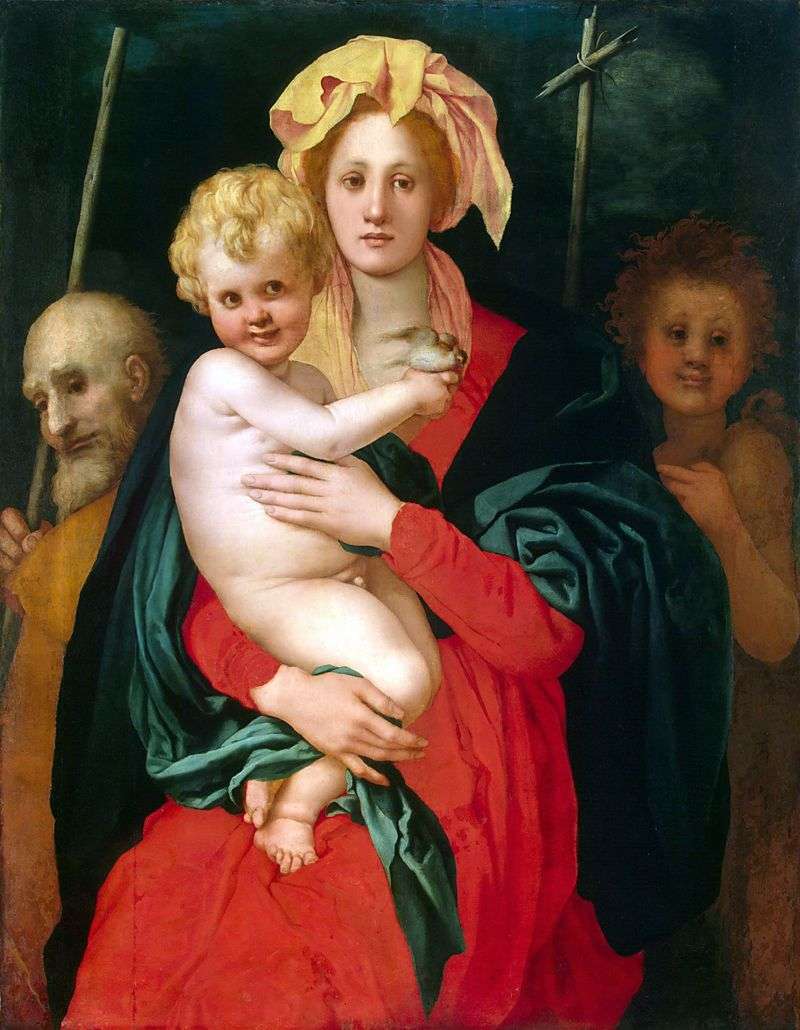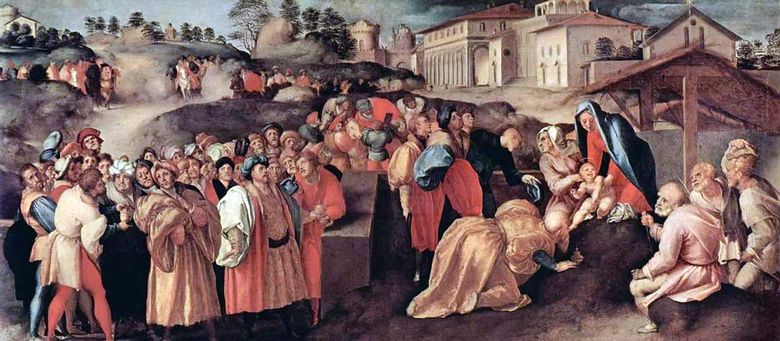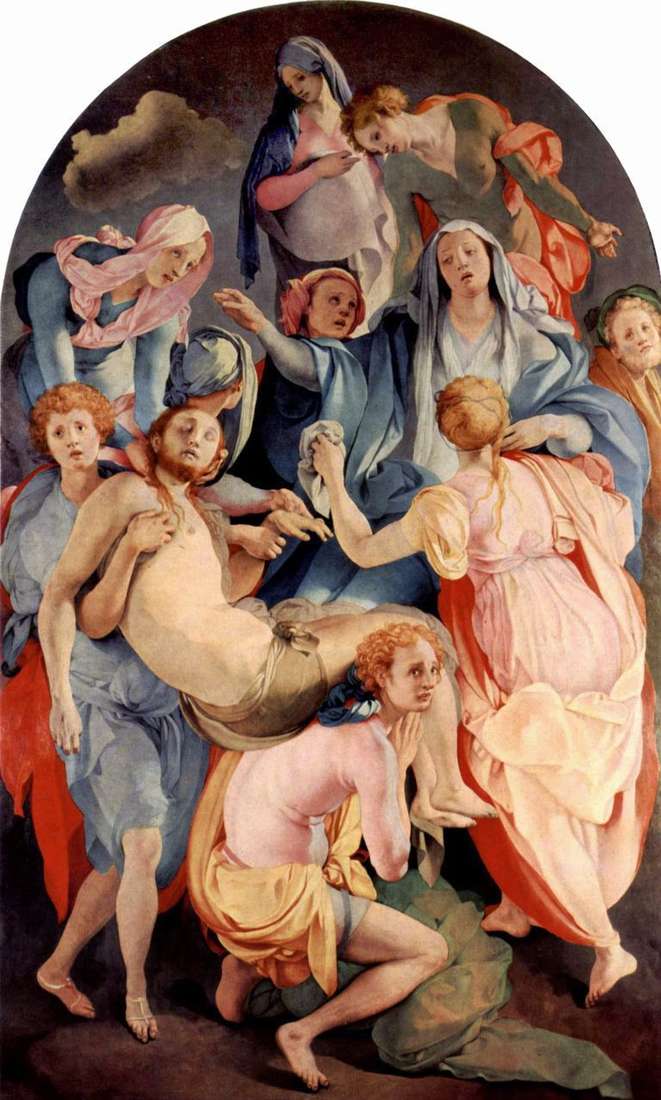
This picture of Florentine Pontormo fully allows to judge how the representatives of Mannerism understood the tasks of the pictorial story. In their paintings, the extreme subjectivity of artistic vision, expressing itself in the deliberate distortion of the proportions of the human body and in the arbitrariness of spatial constructions, is combined, as a rule, with the general mood of anxiety and tension bordering spiritual exaltation.
In the picture of Pontormo, the very act of worshiping the Infant is almost lost among many other episodes of the narrative. Moreover, the main storyline seems to be on the sidelines of the story about the Magi and the gifts they brought. Our attention immediately switches to the study of the appearance, habits and types of personages of the characters standing in the crowd of spectators; it is here, in essence, that the semantic center of the picture is shifted.
Following the glance along the chain of a large group of spectators built as if by a chain, we then shift our attention to the depth of the picture, to the image of promisingly interpreted architecture, then again draw it to the middle plane, where the emotional intensity reaches its climax – but again in the crowd of numerous viewers, and not among the main participants in the action.
 Madonna and Child, St. Joseph and John the Baptist by Jacopo Pontormo
Madonna and Child, St. Joseph and John the Baptist by Jacopo Pontormo Descent from the Cross by Jacopo Pontormo
Descent from the Cross by Jacopo Pontormo Adoration des mages – Jacopo Pontormo
Adoration des mages – Jacopo Pontormo Adoration of the Magi by Jacopo Bassano
Adoration of the Magi by Jacopo Bassano Portrait of Cosimo Senior Medici by Jacopo Pontormo
Portrait of Cosimo Senior Medici by Jacopo Pontormo Vierge à l’enfant, St. Joseph et Jean le Baptiste – Jacopo Pontormo
Vierge à l’enfant, St. Joseph et Jean le Baptiste – Jacopo Pontormo Adoración de los Magos – Jacopo Pontormo
Adoración de los Magos – Jacopo Pontormo Descenso de la cruz – Jacopo Pontormo
Descenso de la cruz – Jacopo Pontormo